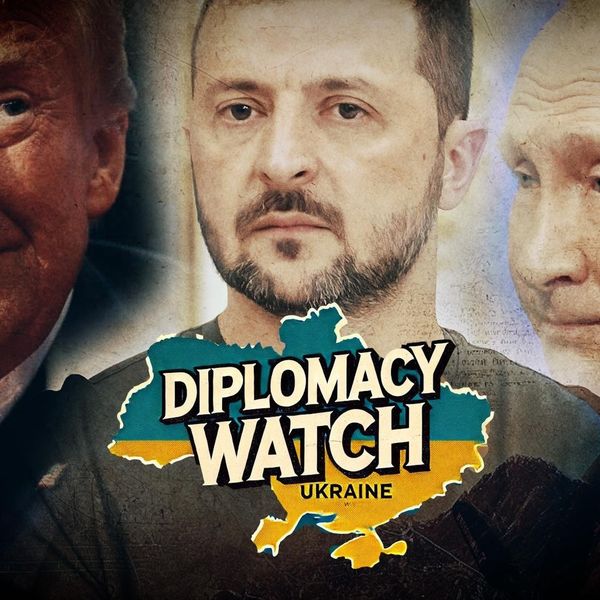I guess it's a rite of passage for anyone seeking to get to the real truths of the military industrial complex in Washington to meet at least one member of the Fighter Mafia. For me, Winslow Wheeler eventually introduced me to the gang. I recall one early time about 15 years ago in Washington, with great reverence (and a bit of cloak and dagger flourish) Wheeler invited me to coffee at Union Station with Pierre Sprey to talk about the Pentagon budget. I don’t remember now what I was writing specifically about or for whom, but I do remember Pierre. He was brilliant, sophisticated, gentlemanly, and despite a dash of impishness, was deadly serious.
Pierry Sprey, 84, passed away this week, leaving a gaping hole in the defense reform community. He, along with other members of the Fighter Mafia, are aging out and leaving us behind. Their first hand memories of Vietnam, the battles over the aircraft design, funding, and the culture of corruption and hubris in the Air Force and the military institution more broadly, are invaluable. I know there are many shaking their heads today with that reality.
Sprey was born in Nice, France. A Yale and Cornell-educated aeronautical engineer, he went to work as one of Defense Secretary Robert McNamera’s “whiz kids” in 1966, and after several years in the belly of the beast became a critic, joining forces with other defense analysts who came to call themselves the “Fighter Mafia.” Their core belief in lightweight fighter planes and close air support and a growing intolerance of the corrupting influence of the defense industry and big budgets, led the design and success of the F-16 and the A-10 “Warthog,” and a movement that attracted some of the best minds inside and outside the DoD, as well as acolytes spanning subsequent generations today.
Sprey was the best background guy as well as spokesman for the cause. He called himself a “subversive,” and never minced words or hid his feelings. He wasn’t partisan. In describing the beginnings of the Fighter Mafia to me during my first meeting in 2013, he said, “we were bureaucratic guerrilla warriors, fighting the system and deploying whatever underground means we could use,” including whistleblowing, leaking, and “suborning” members of Congress, he added, half-joking.
His compatriot, Chuck Myers, who flew B-25 missions in World War II and later became a fabled test pilot — setting a new World Speed Record of 1544 mph with the F-106 in 1959 — said it succinctly at the time: “I don’t know anywhere else to go to find a group more dedicated to making things better.” Myers passed away at the age of 91 in 2016. Everest Riccioni died in 2015. Tom Christie and Chuck Spinney remain as the legacy of the group. If there is a spiritual leader, it’s John Boyd, who died in 1997 and with Christie was the creator of energy–maneuverability theory and the father of the “Ooda Loop”
Sprey had been ubiquitous (particularly in his work with the Project on Government Oversight) in recent years in his championing of the A-10 (saving it from several Congressional deaths) and criticism of the F-35. It is obvious that his condemnation of the latter — that it was a “dumb” idea, loaded down with so many bells and whistles that drove the price up (making Lockheed happy), and making its overall performance less effective, was spot on.
“There’s a real reign of terror going on,” he told me in 2013, referring to the latest attempt in the Air Force at the time to get rid of the entire fleet of A-10 Thunderbolts, which had been designed over 30 years prior and had been deployed in every war, including Afghanistan and Iraq, since. “Of course the real reason they’re doing it, aside from the traditional hatred for close air support, is they’re using the money for F-35 overruns.”
Probably the most effective argument he and the Mafia made, that not only endeared me to the group but triggered my own egalitarian impulses, was that they felt the Air Force had left the “grunts” on the ground hanging — their desire for glamorous dog fighting machines over close air support drove the decisions that the Mafia said left the military with expensive, less effective aircraft and created a culture in which winning bureaucratic food fights took priority over keeping soldiers, and ultimately, pilots safe. This, they told me, began during World War II, and never ended, as the military industrial complex grew and hardened into the institution it is today.
In describing Myers for a tribute I penned after his death in 2016, Sprey summed up his — all of their — motivations for challenging the Air Force, an institution that ironically, had brought them all together. “From [WWII] on, Chuck always felt that the fighting guy on the ground was getting screwed and he was seeing the fighter pilots were being screwed from bad airplanes in the air. It was solidarity with the pilots and grunts — it was that simple,” he told me.
Looking at this year’s budget trajectory, it appears, that the same “Mafia Fighter” determination that kept the A-10 in service is still at work. Like it or not, they’re not going anywhere.
The label “maverick” is tossed around a lot in Washington — anyone who routinely veers off the company line gets to wear it, it seems. Sen. John McCain donned it proudly, whether it completely fit or not. The Fighter Mafia is/was the generation of New Frontier argonauts who were the first to see where the entire project was going, and instead of profiting from it like everyone else around them, used their extraordinary smarts and skills to try and steer to a better place. They knew when something was wrong and weren’t going to stick their heads in the sand. That was the easy way. This is what a “maverick” really is,
And it wasn’t just about planes and the Air Force. When President Trump started peppering the E-Ring with former executives from Boeing and Raytheon, Sprey saw it as the unfortunate evolution in the Pentagon culture, calling it the “self licking ice cream cone,” filled with “more and more egregious military industrial complex shills, just some politicians and defense technocrats.”
For everyone who, like me, had felt blessed to be around Sprey and the Fighters, benefitting from their mentorship, research, and most of all their spirit of independent, principled thinking, the loss of Sprey has been a blow.
"I will miss his late-night phone calls, his always on point critiques, and his legendary stories. After I have a chance to gather my thoughts, I’ll have more to say about this incredible man,” tweeted Dan Grazier, who along with Danielle Brian, Mandy Smithberger, and others at POGO had worked closely with Sprey over the years. That would include Wheeler, who carries the torch for the group into the next chapter.
“Pierre had more raw mental horsepower than any other human being I ever met, and more than any other person I know ever met,” Wheeler told me in an email over the weekend.
He also had iron work disciple and kept vampire hours late into the morning when on a project he valued. He also could interact on the human level with tenderness and understanding, truly meaningful ethics and profound and diverse knowledge. Arguing with him was a bitch but never abrasive, and the very few times I convinced him of my facts and analysis I hold on to as truly meaningful victories.
To me, Sprey is what an American hero is and should be. His family arrived here fleeing the Nazis and as a gifted student he enjoyed the best elite education anyone could ask for. Instead of seeking power and riches, he used his extraordinary opportunities to challenge what the government was doing in the people’s name during those pivotal years of the Cold War, when military activities and budgets were moving farther and farther from civic circumspection. This mission of accountability was taken at the risk of his own reputation and livelihood. But by all measures, seeing his wide swath of friends and admirers (and we haven’t even touched upon his work in the music business), he flourished. And we all benefitted, whether knowing him or not.















